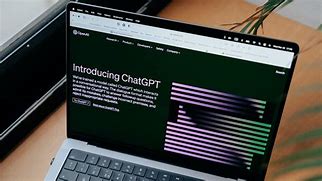Title: Can Blackboard Catch Students Using ChatGPT? Let’s Unpack the Mystery
(Educational Safeguards: Can Blackboard Identify ChatGPT Usage?)
Picture this. A student finishes an essay minutes before the deadline. They pasted chunks of text from ChatGPT into their assignment. They hit “submit” on Blackboard. Now they’re sweating. Can the platform sniff out AI help? Let’s dig into how Blackboard works and whether it’s playing detective with ChatGPT.
Blackboard is a classroom powerhouse. Teachers use it to post lectures, track grades, and host quizzes. Students use it to turn in work. But here’s the thing—Blackboard itself isn’t designed to catch sneaky AI use. It’s like a digital filing cabinet. It holds stuff but doesn’t scan for cheating tricks.
So how do schools spot ChatGPT content? Many plug in third-party tools. Turnitin, for example, rolled out an AI detector last year. It flags writing that feels too “machine-made.” If a school links Turnitin to Blackboard, submissions get scanned automatically. The system compares student work to known AI patterns. Oddly structured sentences? Repetitive phrases? Overly perfect grammar? Red flags pop up.
But here’s the catch. AI detection isn’t foolproof. ChatGPT evolves fast. Newer versions mimic human quirks—typos, slang, uneven flow. Tools like Turnitin sometimes miss these. Worse, they might blame humans for AI writing or vice versa. Imagine getting accused of cheating because your natural style accidentally matches a robot’s. Messy, right?
Teachers also watch for sudden changes. If a student’s writing jumps from shaky to Shakespearean overnight, eyebrows rise. Maybe they got help. Maybe they practiced. Either way, Blackboard logs submission times, edits, and drafts. Instructors can check if a paper appeared fully formed in one upload. No drafts? Another red flag.
Students aren’t sitting ducks. Some tweak ChatGPT text to dodge detectors. They swap words. Break up sentences. Add intentional errors. It’s a game of cat and mouse. Schools update tools. Students adapt. Blackboard just hosts the battlefield.
What about Blackboard’s own features? The platform can lock down browsers during tests. It records webcams. It restricts copy-pasting. These stop old-school cheating but don’t tackle AI. Typing essays in a monitored window won’t matter if ChatGPT wrote it earlier.
Some schools get creative. They assign work that needs personal reflection. ChatGPT stumbles here. It can’t replicate your childhood memories or opinions on last week’s lecture. Projects with multimedia—videos, podcasts, interviews—also stump AI. You can’t fake a voice recording of yourself analyzing a poem.
Group work helps too. Discussing assignments in class reveals who grasps the material. If someone aces essays but freezes when asked questions, teachers notice. Blackboard’s discussion boards show who’s engaged. Quiet participants might be hiding AI crutches.
Still, the tech arms race continues. Companies promise better AI detectors. Schools buy them. Students find workarounds. Blackboard stays in the middle, updating slowly. For now, the best defense mixes old and new. Teachers talk to students. They design assignments AI can’t crack. They use tools like Turnitin but trust their guts too.
(Educational Safeguards: Can Blackboard Identify ChatGPT Usage?)
The big lesson? AI changes education, but human judgment still rules. Platforms like Blackboard handle logistics. People handle the rest. Whether you’re a student or teacher, stay curious. Watch the tech. Adapt. And maybe don’t bet your grade on outsmarting the system just yet.
Inquiry us
if you want to want to know more, please feel free to contact us. (nanotrun@yahoo.com)




